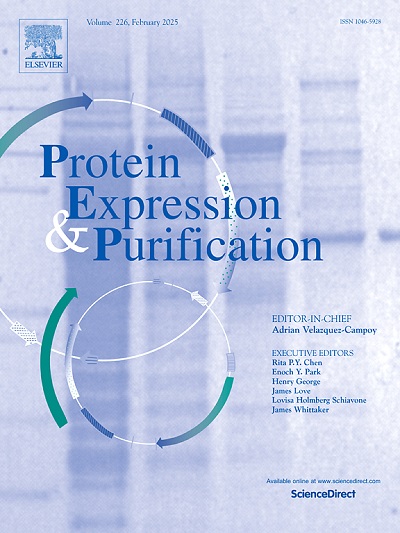Production of recombinant coiled coil silk proteins for materials synthesis
IF 1.2
4区 生物学
Q4 BIOCHEMICAL RESEARCH METHODS
引用次数: 0
Abstract
Rational design of fundamentally new advanced materials would be facilitated by availability of polymers with controlled monomer sequence. Recombinant proteins offer polymers with controlled monomer sequence but are underrepresented in material science, in part because suitable proteins cannot be produced at commercial levels in recombinant systems. The silk proteins of honeybees fulfil the requirements for rational materials design and can be produced at commercially viable levels. In this study we compare recombinant expression of these silks in bacteria, yeast and insect cells to identify the most suitable method of silk protein production. Yeast and insect cell lines are unlikely to be suitable expression platforms for these silks as the recombinant proteins were degraded, expression levels were low or absent, and host cell protein levels were high. We confirm that expression into E. coli inclusion bodies using defined media offers high level expression and to date is the best expression system for these proteins.

用于材料合成的重组盘绕丝蛋白的生产。
具有控制单体序列的聚合物的可用性将促进从根本上新的先进材料的合理设计。重组蛋白提供了具有控制单体序列的聚合物,但在材料科学中代表性不足,部分原因是在重组系统中无法在商业水平上生产合适的蛋白质。蜜蜂丝蛋白满足合理的材料设计要求,可在商业上可行的水平上生产。在本研究中,我们比较了这些蚕丝在细菌、酵母和昆虫细胞中的重组表达,以确定最合适的蚕丝蛋白生产方法。酵母和昆虫细胞系不太可能成为这些蚕丝的合适表达平台,因为重组蛋白被降解,表达水平低或不存在,而宿主细胞蛋白水平高。我们证实,使用确定的培养基表达到大肠杆菌包涵体中提供了高水平的表达,并且是迄今为止这些蛋白质的最佳表达系统。
本文章由计算机程序翻译,如有差异,请以英文原文为准。
求助全文
约1分钟内获得全文
求助全文
来源期刊

Protein expression and purification
生物-生化研究方法
CiteScore
3.70
自引率
6.20%
发文量
120
审稿时长
32 days
期刊介绍:
Protein Expression and Purification is an international journal providing a forum for the dissemination of new information on protein expression, extraction, purification, characterization, and/or applications using conventional biochemical and/or modern molecular biological approaches and methods, which are of broad interest to the field. The journal does not typically publish repetitive examples of protein expression and purification involving standard, well-established, methods. However, exceptions might include studies on important and/or difficult to express and/or purify proteins and/or studies that include extensive protein characterization, which provide new, previously unpublished information.
 求助内容:
求助内容: 应助结果提醒方式:
应助结果提醒方式:


